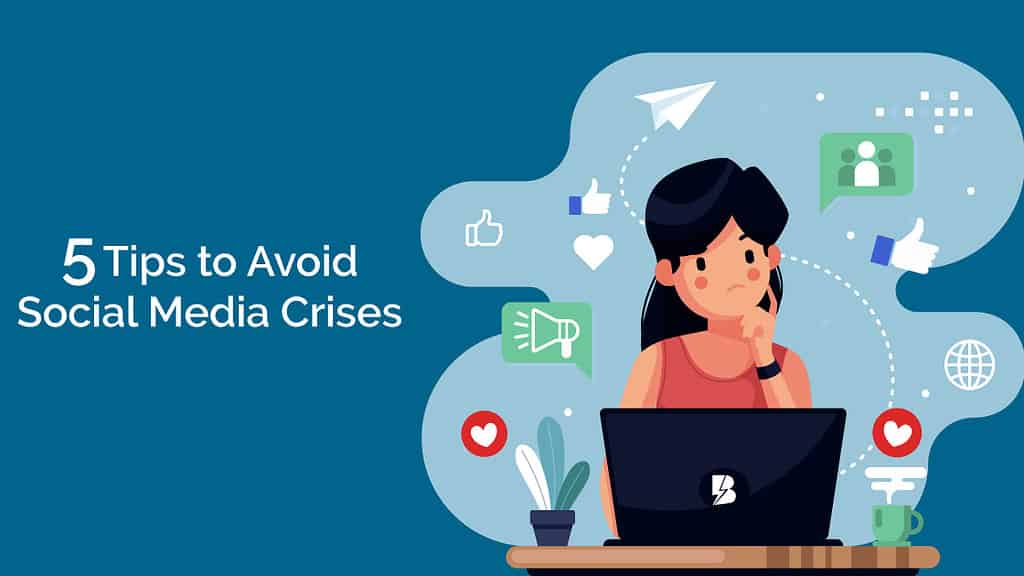I. Introduction
In today’s digital age, a Social Media Crisis Response Plan is not a luxury; it’s a necessity. Social media crises can escalate rapidly, and without a proper response plan in place, they can inflict lasting damage on a brand’s reputation. Let’s take a moment to understand what a social media crisis is. It can be a public backlash over a controversial post, a negative trending hashtag, or even a viral complaint from a disgruntled customer. These situations, if not managed properly, can spiral out of control and cause significant harm to your brand image.
Recognizing this potential threat, it’s essential for every business, regardless of size, to have a Social Media Crisis Response Plan. This plan outlines the steps your organization will take to mitigate the damage and navigate its way out of the crisis. Without such a plan, your brand is left vulnerable to the rapid pace of social media, where a single tweet can cause a brand crisis.
II. Recognizing the Need for a Crisis Response Plan
It’s important to acknowledge that a social media crisis can hit any business at any time. Identifying signs of a potential crisis is the first step towards developing an effective crisis response plan. This could be a sudden increase in negative sentiment around your brand, an unusual spike in social media mentions, or a controversial post gaining traction. The ability to spot these signs early can significantly reduce the potential damage to your brand.
Consider the case of a popular fast-food chain that was unprepared when a video of an employee mishandling food went viral. The lack of a timely and effective response allowed the crisis to escalate, resulting in significant brand damage and customer loss. This incident underscores the importance of having a robust crisis response plan in place.
III. Assembling Your Crisis Response Team
A key component of your Social Media Crisis Response Plan is your crisis response team. This team is responsible for managing the crisis from detection to resolution. They monitor social media platforms for potential crises, formulate the response strategy, and communicate with stakeholders. Key roles within the team include a crisis manager, who coordinates the response efforts; social media managers, who monitor social media platforms; and communications personnel, who draft response messages.
Clear communication channels among team members are essential to ensure a quick and coordinated response. The entire team should be aware of their roles and responsibilities and be prepared to execute the crisis response plan at any time.

IV. Developing Your Crisis Response Strategy
Creating an effective crisis response strategy is a critical part of your Social Media Crisis Response Plan. This strategy should outline the steps your organization will take to mitigate the crisis, from acknowledging the issue to communicating with stakeholders and resolving the situation. It should also specify how your organization will learn from the crisis to prevent similar incidents in the future.
Developing a comprehensive and proactive response plan involves several steps. First, identify potential crises that your organization could face, and create specific response strategies for each scenario. Then, establish procedures for detecting and assessing potential crises, and outline the decision-making process during a crisis. Finally, specify the channels and formats for crisis communication, and plan post-crisis evaluation and learning activities.
V. Establishing Monitoring and Alert Systems
Real-time monitoring is crucial for early detection of a potential social media crisis. By keeping a close eye on your brand’s social media platforms, you can identify negative trends before they escalate into a crisis. Social media monitoring tools can help in this regard by tracking mentions, sentiment, and trends related to your brand.
In addition to monitoring, setting up alert systems is another proactive measure to ensure that you’re the first to know when a crisis is brewing. These systems can alert you to unusual spikes in social media activity or sudden increases in negative sentiment, allowing you to
respond swiftly and appropriately.
VI. Creating a Crisis Communication Plan
Communication is a pivotal part of any Social Media Crisis Response Plan. When a crisis hits, how your brand communicates with its audience can significantly impact the situation’s outcome. The communication should be clear, empathetic, and timely to effectively manage the crisis and preserve your brand’s reputation.
The process involves crafting messages that address the issue directly, acknowledge the audience’s concerns, and outline the steps your brand is taking to resolve the situation. A poorly worded or untimely response can escalate the crisis, so it’s essential to carefully consider your communication strategy.
VII. Testing and Refining Your Crisis Response Plan
Just having a Social Media Crisis Response Plan in place isn’t enough; it’s crucial to regularly test and refine it. This ensures that the plan is up to date and effective. Regular testing can help identify any weaknesses or gaps in the plan, which can then be addressed before a real crisis hits.
To evaluate the effectiveness of your crisis response plan, you can conduct post-crisis reviews or simulate crisis scenarios. These exercises can provide valuable insights into how your team responds under pressure and how well your plan works in a real-life situation.
VIII. Conclusion
In conclusion, a robust Social Media Crisis Response Plan is vital in today’s digital landscape. It not only helps manage crises when they occur but also equips your brand to prevent potential crises. As social media continues to evolve, so should your crisis response plan. Remember, continuous learning and adaptation are key in effective crisis risk management.
The journey towards creating a strong Social Media Crisis Response Plan may seem daunting, but the investment is well worth it. Not only will it safeguard your brand’s reputation, but it will also empower you to navigate the unpredictable world of social media with confidence.










